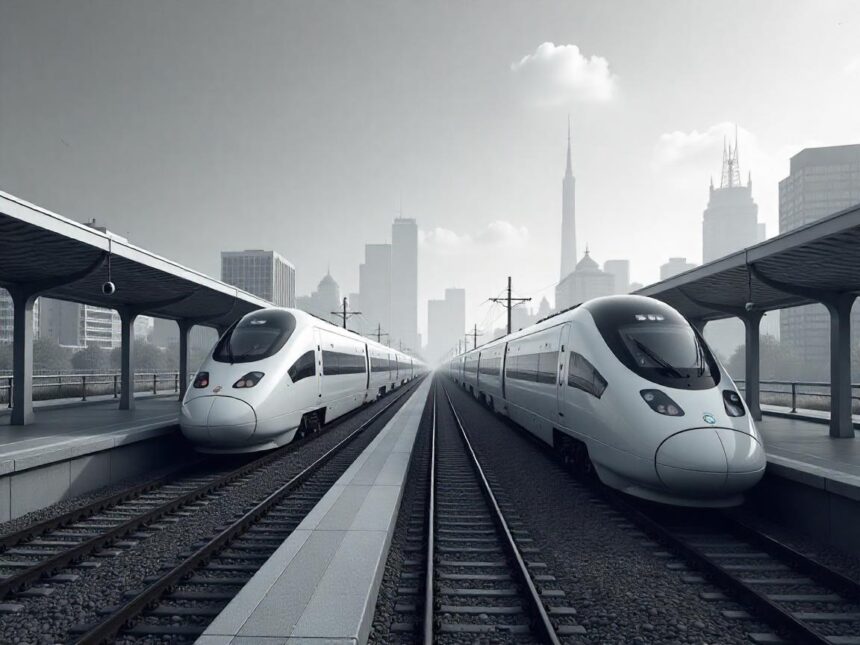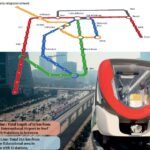Wednesday, June 11, 2025
The Czech Republic is making daring strikes. It now unites with China, Japan, Germany, France, United Kingdom, United States, Spain, Italy, India, South Korea, Australia, Saudi Arabia, United Arab Emirates, Sweden, Norway, Netherlands, Switzerland, Austria, Poland, Brazil, Turkey, Russia in a world race towards high-tech rail transformation. With its newest GSM-R rollout, the Czech Republic alerts it’s able to compete on a world stage of smarter, quicker, and safer practice journey.
However this isn’t only a tech improve—it’s a revolution. The GSM-R system is altering how trains transfer, how they speak, and the way they keep on time. In the meantime, nations like Canada and Australia are pushing ahead with their very own high-tech options, and the US, Saudi Arabia, and Japan are investing billions to modernize outdated networks. Germany and Norway, identified for engineering precision, are going all in too.
So why is the Czech Republic’s transfer such an enormous deal?
What does this imply for world journey?
And the way is GSM-R quietly turning into the engine of the longer term?
Let’s uncover the complete story.
A quiet revolution is reworking the railways of the Czech Republic. Whereas a lot of Europe focuses on air journey, the Czech Republic is making daring strikes underground—by means of tunnels, alongside corridors, and throughout borders.
Správa železnic (SŽ), the nationwide rail infrastructure authority, has launched a strong wave of investments into cutting-edge railway communication methods. On the coronary heart of this transformation is GSM-R, a safe, devoted cell communication know-how constructed particularly for railway operations.
However this isn’t nearly new tech. It’s about pace. Security. Effectivity. And most of all—about Europe-wide integration.
The International System for Cell Communications – Railway (GSM-R) is not only one other infrastructure improve. It’s the digital nervous system that helps railway management, real-time communication, and future-ready automation.
For Czech railways, adopting GSM-R is a foundational step towards deploying the European Prepare Management System (ETCS). Collectively, these applied sciences will increase capability, slash delays, and guarantee security by means of automation and real-time monitoring.
In a world the place transportation calls for pace and reliability, this shift is greater than well timed. It’s essential.
Kontron Transportation has emerged as a key participant on this rail renaissance. Trusted by Správa železnic, Kontron has secured a number of high-value contracts to construct, set up, and combine the GSM-R system throughout very important railway corridors.
From base station development to sign distribution and system integration, Kontron’s technical management is setting the tempo. With contracts starting from €26 million to over €98 million, the size is very large—and the stakes are excessive.
They usually’re not working alone. Expert subcontractors are backing them, accelerating deployment and guaranteeing high quality.
Progress is already seen. In 2022, Kontron accomplished the Kralupy nad Vltavou – Neratovice section. This set the tone, proving that speedy, environment friendly GSM-R rollout is feasible with the suitable crew and instruments.
By October 2024, The Momentum Surged. And Main € 98.2 Million Undertaking upgraded The Closely Trafficed Pardubice – Hradec Králové – Jaroměř Line, Increasing Service to Prakkačka.
Every milestone lays one other monitor towards a wiser, safer rail system—and opens the trail for ETCS Stage 2 integration.
The latest contract—awarded in late 2024—targets a strategic hall from Hranice to the Slovak border. Valued at €34 million, this three-year mission will construct the communication spine wanted for future rail automation and cross-border service coordination.
Launched in March 2024, this mission will lengthen GSM-R’s attain and shut essential gaps within the Czech rail communication map. With completion due by 2027, the timeline is aggressive. However the urgency is actual.
This hall will change into a lifeline—linking Czech rail to its Slovak neighbor with future-ready methods.
To the common traveler, rail modernization could sound summary. However the advantages are tangible—and fast-approaching.
Fewer delays. Higher security. Smoother journeys. Cross-border comfort.
As soon as ETCS Stage 2 is dwell, trains will function with precision timing, responding mechanically to real-time circumstances. Passengers can anticipate diminished wait occasions, smarter ticketing, and higher journey coordination between cities and nations.
Furthermore, as rail turns into extra aggressive, pricing will regulate. Vacationers might see high-speed, high-tech rail rival low-cost air journey—particularly for regional routes.
As air journey faces congestion, environmental criticism, and rising prices, European nations are reimagining rail.
The Czech Republic’s funding in GSM-R positions it as a frontrunner on this shift. It’s not simply enhancing rail—it’s aligning nationwide infrastructure with EU mobility objectives.
By laying the groundwork for ETCS, the nation ensures its railways will probably be absolutely interoperable with the remainder of Europe. Which means extra seamless journey from Prague to Vienna, Berlin, or Bratislava.
The outcome? A journey expertise that’s greener, quicker, and extra linked than ever.
The Czech Republic is proving that rail innovation doesn’t require flashy headlines—it wants clear technique, dependable companions, and long-term dedication.
The GSM-R rollout isn’t a pattern—it’s a metamorphosis. One that can redefine how trains function, how passengers transfer, and the way nations collaborate on mobility.
Správa železnic and Kontron Transportation are usually not simply putting in {hardware}. They’re constructing the digital structure that can run Czech trains for many years.
Because the tasks stretch throughout areas—from Dolní Žleb to Hranice—the complete image comes into focus. That is now not only a nationwide improve. It’s a mannequin for European modernization.
Czech vacationers will quickly board trains that aren’t solely punctual however predictive. Infrastructure will now not be reactive—will probably be proactive.
And because the rail community strengthens, tourism, enterprise journey, and regional improvement will profit in highly effective, measurable methods.
The way forward for Czech rail isn’t simply approaching—it’s already on the tracks, gathering pace.
Tags: Czech Republic, Dolní Žleb, ETCS, European Rail Community, European Transport Coverage, GSM-R, Excessive-Pace Rail, Hradec Králové, Hranice, Jaromer, Prang Transportation, Kralupy nad Vltavou, Neratovice, Pardubice, Prague, Prakačka, Railway Communication Techniques, RailWay Modernization, Slovakia, Sensible Journey Infrastructure, Railway Administration








